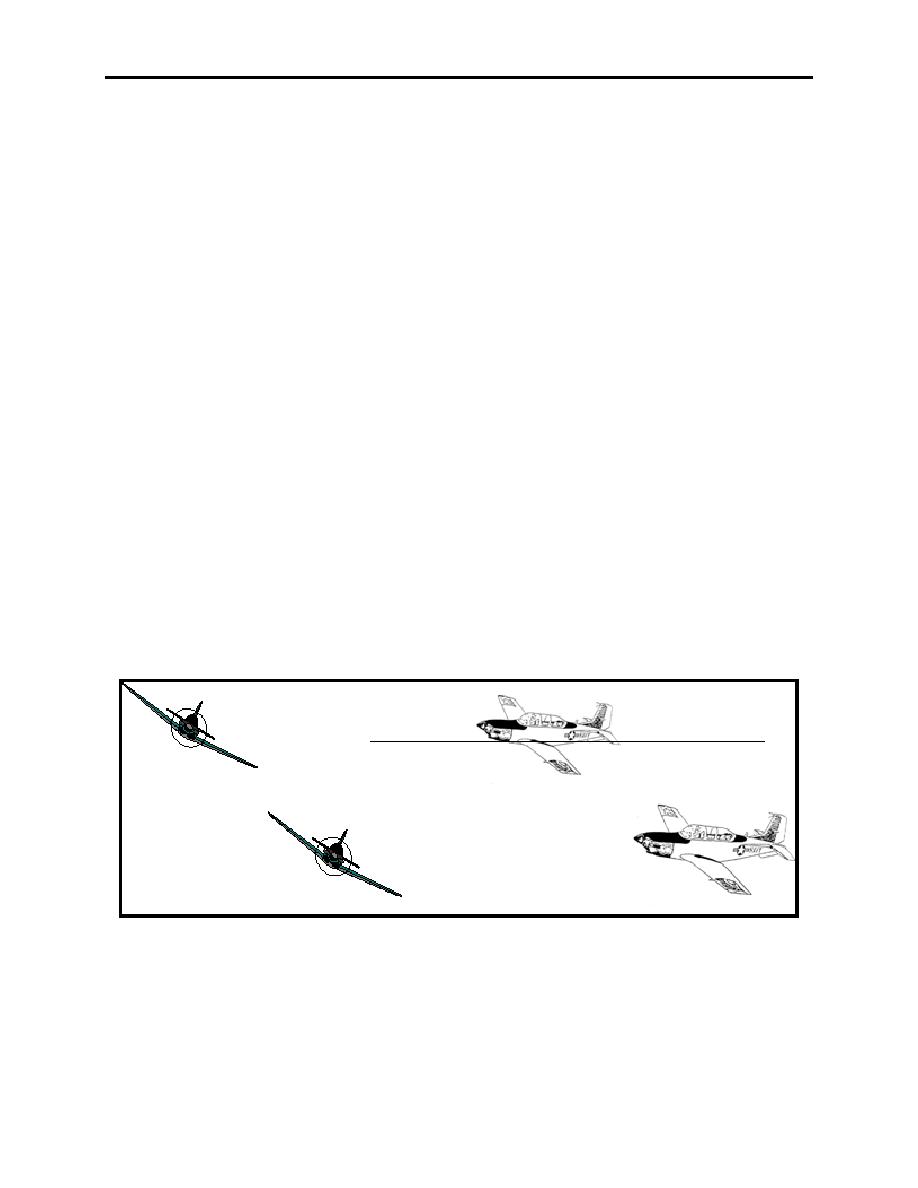 |
|||
|
|
|||
|
|
|||
| ||||||||||
|
|  T-34C PRIMARY FORMATION FLIGHT TRAINING
CHAPTER THREE
During the turns, Lead should focus on being a smooth platform and will utilize the "parade rate
of roll" when rolling into and out of bank. The parade rate of roll is defined as rolling at a
rate that achieves 30 angle of bank after 30 of turn. Turns will be made in alternate
directions. For area planning purposes, if the first parade turn in the exercise is to the left, then
the direction of movement of the formation will be to the left. Turns can be continuous or
"linked" after F4002 at the discretion of the Instructor Pilots so long as Wing is able to maintain
position.
Wing. Wing is required to maintain a fixed position in relation to Lead in turns and therefore
should be cognizant of all relevant factors when two aircraft are turning together. Wing will
need to apply the concepts of radius of turn and relative motion to maintain position.
Turns Into Wing
As Lead rolls into an angle of bank, Wing will match Lead's angle of bank and maintain the
hidden by the wing, and propeller arc on the midpoint. The difference between turns into Wing
and flying straight and level has a lot to do with the fact that the Wingman is on a slightly shorter
turn radius than Lead. If Wing is flying the same airspeed as Lead but with a shorter turn radius,
he is going to turn through space slightly faster than Lead and will therefore tend to get ahead of
the bearing line (acute). Wing must initially reduce power a small amount to maintain position
and then modulate power to hold position. To roll about the Lead's longitudinal axis (Figure 3-
15), Wing will have to lower the nose slightly while reducing power and matching Lead's roll
rate. To roll out, Wing will need to add a small amount of power while pulling the nose up
slightly to maintain the parade checkpoints.
Figure 3-15 Parade Turns Into
SECTION PARADE 3-19
|
|
Privacy Statement - Press Release - Copyright Information. - Contact Us |